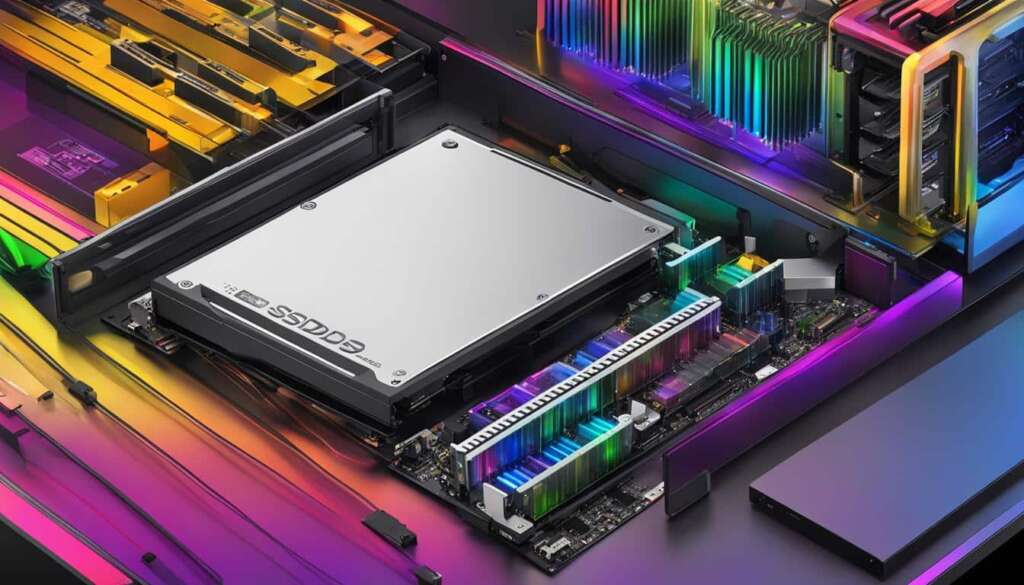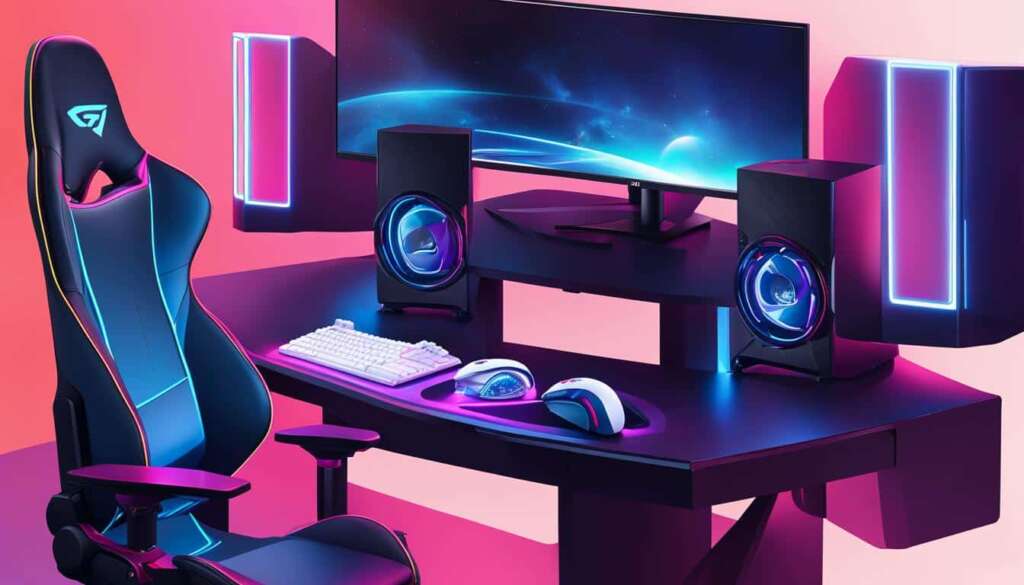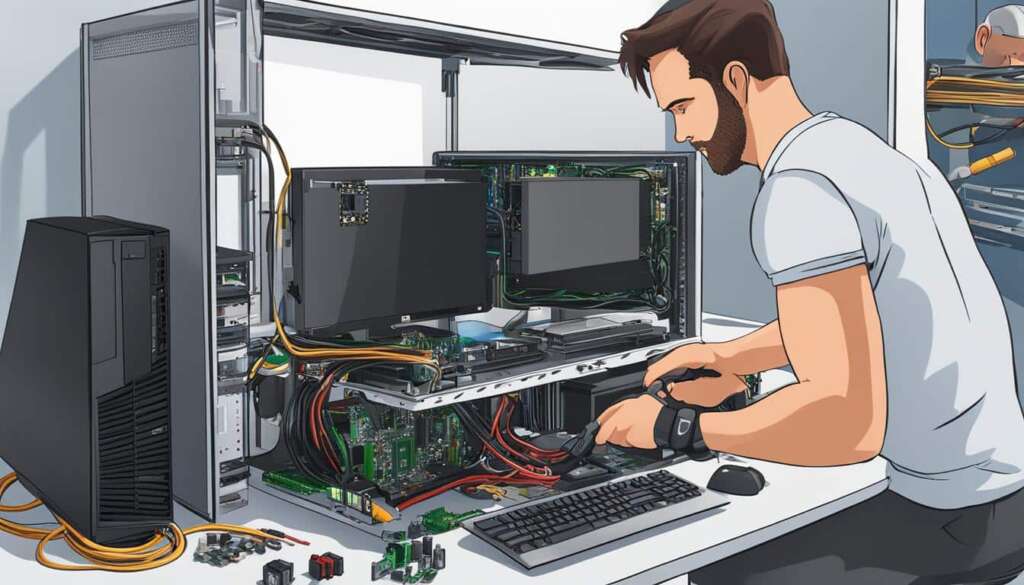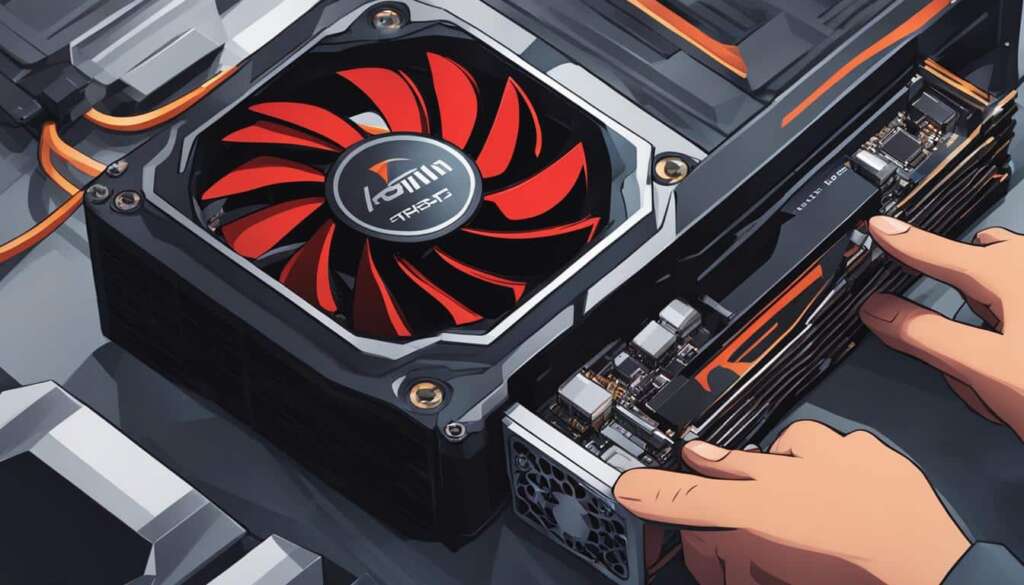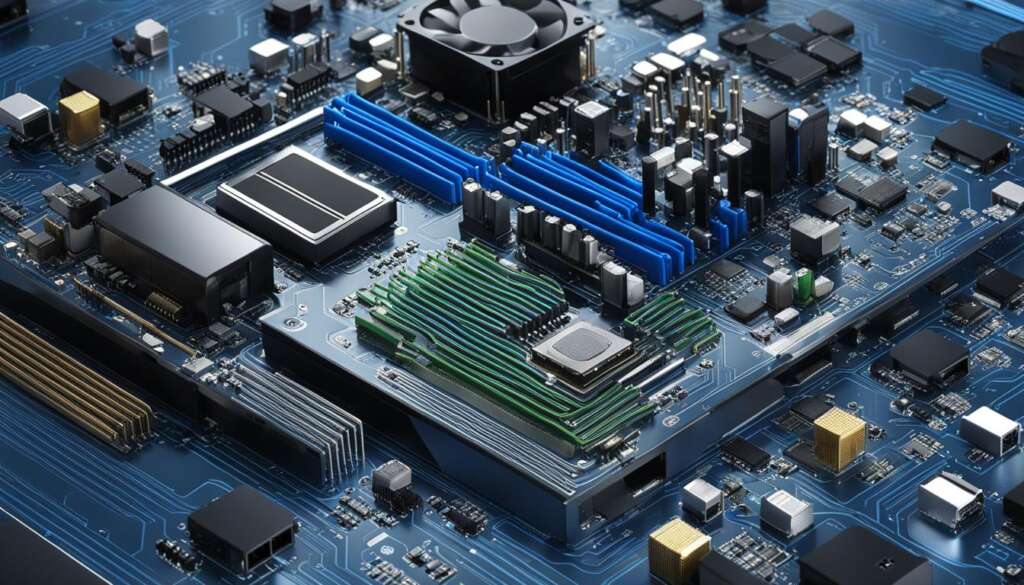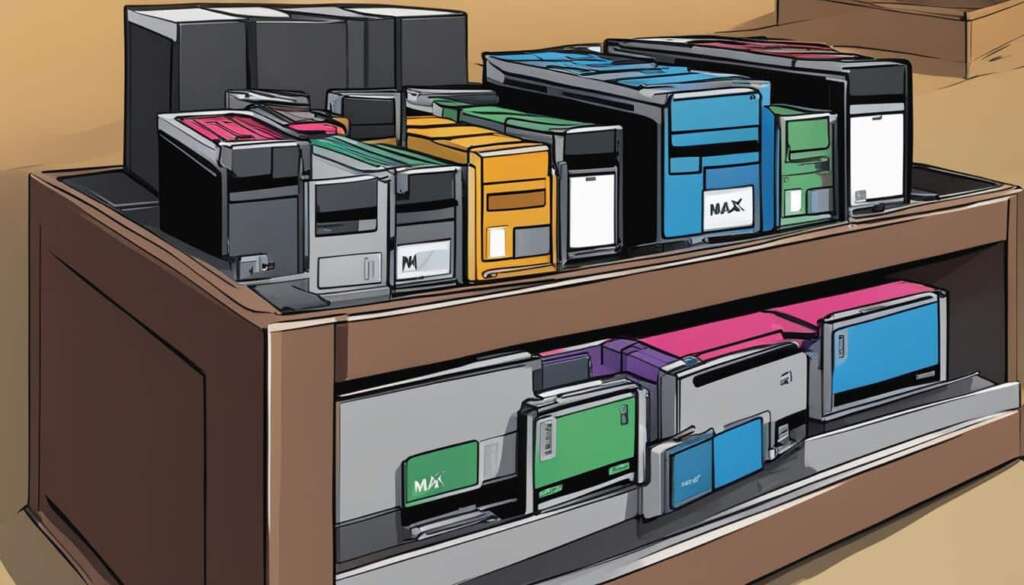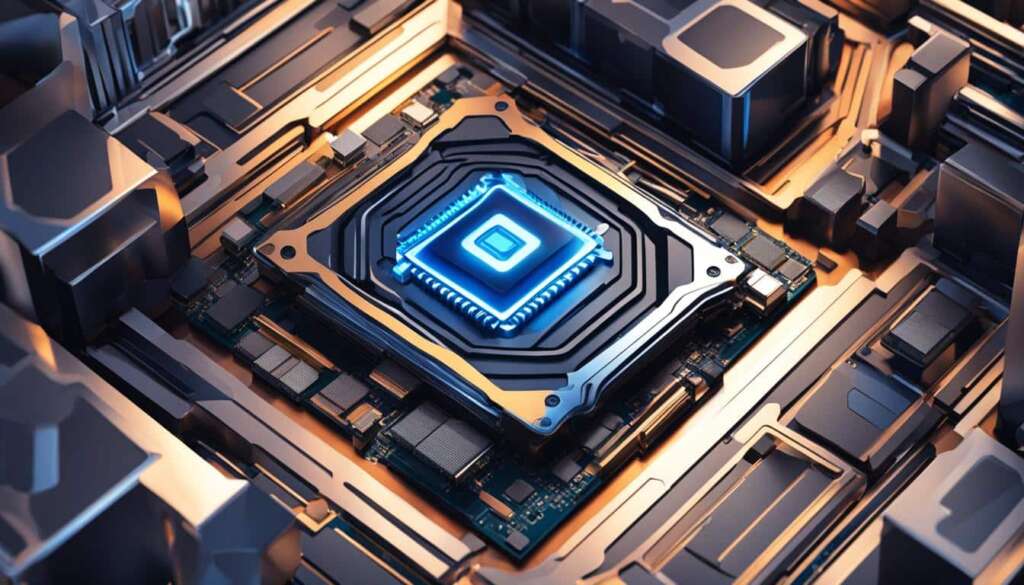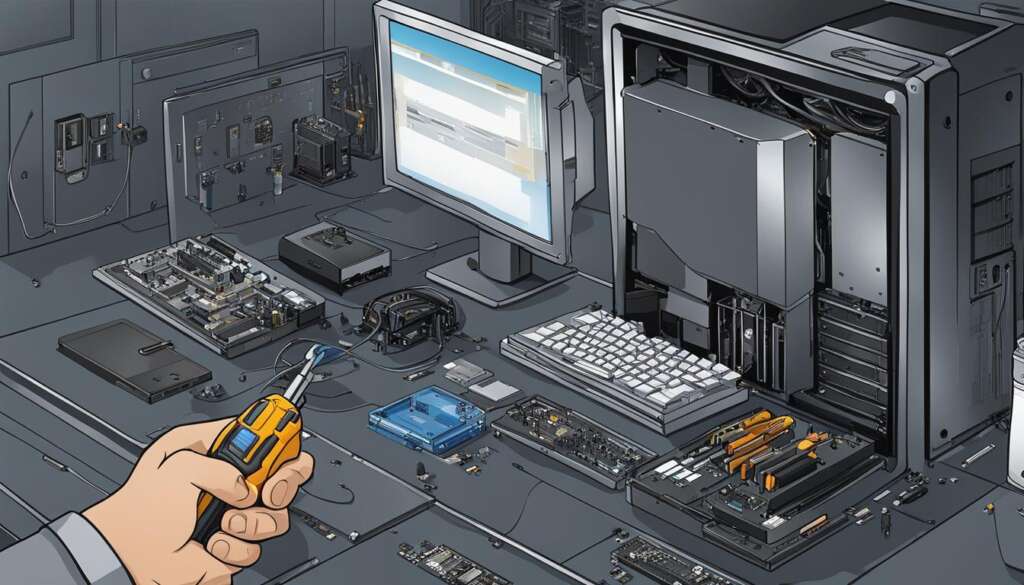Table of Contents
RAM for PC, also known as computer memory, is a crucial component that significantly impacts system performance. It serves as the device’s short-term memory, providing quick access to important data for the CPU, graphics card, and other components.
RAM acts as a temporary storage space, allowing applications and the operating system to retrieve data from it instead of slower storage options like hard drives or SSDs. This results in faster data access and improved overall system responsiveness.
Various types of RAM exist, such as DDR4 for desktops and LPDDR for mobile devices. The amount of RAM required depends on the use case, with a minimum recommendation of 8GB for Windows PCs. However, for multitasking, gaming, and video editing, it is recommended to have 16GB or more.
RAM speed, measured in megatransfers per second, also plays a vital role in system performance. While having more RAM is beneficial, there is a point of diminishing returns where faster memory becomes more important than increased capacity.
Installing or upgrading RAM on a computer can be done by following specific instructions. By understanding the essentials of RAM for PC, you can optimize your system’s performance and ensure smooth operation for various tasks.
What is RAM, and what does it do?
RAM, or random-access memory, serves as a device’s short-term memory. It stores information that applications and the operating system may need in the near future, making it easily and quickly accessible by the CPU, graphics card, and other components. This eliminates the need for constant retrieval of data from slower storage options like hard drives or SSDs. RAM holds the data until it is cleared or overwritten, allowing new relevant data to be stored. It functions similarly to the cache on a CPU, ensuring that data is readily available when requested, improving overall system performance. RAM plays a crucial role in reducing the time it takes for different components to fetch data, enhancing the speed and responsiveness of a computer.
RAM acts as short-term memory for a computer. Just as the human brain relies on short-term memory to process and manipulate information quickly, RAM serves as the digital equivalent. When you open an application or run software, the necessary data is temporarily stored in RAM, enabling the CPU to access it rapidly. It functions as a middle ground between the CPU and long-term data storage options, such as hard drives or solid-state drives.
Imagine you’re working on a document, and you need to retrieve information from your computer’s memory. Without RAM, the CPU would have to constantly fetch data from slower storage options, resulting in lag and decreased performance. However, with RAM, the CPU can quickly access the relevant data, leading to smoother operations and faster overall system performance.
RAM acts as the bridge between the CPU, graphics card, and other components, ensuring that data is readily available for processing. It serves as a temporary storage location for data that needs to be accessed frequently, functioning as the work desk that holds the documents you require for immediate use.
Think of RAM as a whiteboard that you can jot down important information on. The more whiteboard space you have, the more data you can store for fast access. Similarly, the larger the amount of RAM in your system, the more data can be stored for quick retrieval, allowing for seamless multitasking, smooth gaming experiences, and efficient data processing.
In summary, RAM plays a vital role in a computer’s performance by providing fast and efficient access to data. It acts as short-term memory, storing information for immediate use by the CPU, graphics card, and other components. Without RAM, computers would experience significant delays and decreased responsiveness.
Different types of RAM
RAM, or random-access memory, exists in various types to cater to different computing needs and devices. Let’s explore some of the most common RAM types and their unique characteristics.
Desktop RAM
For desktop computers, DDR4 is the most prevalent RAM type. It offers improved speed and efficiency compared to its predecessor, DDR3. DDR4 memory modules are compatible with modern motherboards and provide faster data transfer rates, resulting in enhanced overall system performance. As technology advances, we can expect the emergence of DDR5 RAM for the latest desktop systems.
Mobile RAM
In mobile platforms such as laptops and smartphones, LPDDR (Low Power Double Data Rate) memory is utilized. LPDDR4 and LPDDR5X are the most recent generations of mobile RAM. These memory types provide comparable performance to desktop-grade DDR memory while consuming less power. LPDDR4 and LPDDR5X offer higher bandwidth and increased efficiency, enabling smooth multitasking and improved battery life on mobile devices.
Video RAM
Graphics cards feature dedicated memory known as VRAM, or video RAM. The most common type of VRAM found in modern graphics cards is GDDR6. GDDR6 memory offers high-speed data transfers, ensuring smooth and seamless graphics rendering during gaming, video editing, and other demanding tasks. It provides the necessary bandwidth for the graphics card to handle heavy workloads effectively. Additionally, certain Nvidia graphics cards utilize GDDR6X RAM, which further enhances performance. The development of the next-generation GDDR7 memory is currently underway, promising even faster speeds and improved efficiency.
Each RAM generation brings advancements in speed, bandwidth, and efficiency, contributing to overall system optimization and delivering better user experiences.
| RAM Type | Typical Usage | Memory Generation |
|---|---|---|
| DDR4 | Desktop computers | 4th generation |
| DDR3 | Older systems | 3rd generation |
| DDR5 | Latest systems | 5th generation |
| LPDDR4 | Mobile platforms | 4th generation |
| LPDDR5X | Mobile platforms | 5th generation |
| GDDR6 | Graphics cards | 6th generation |
| GDDR6X | Selected Nvidia graphics cards | 6th generation |
| GDDR7 | Next generation (in development) | 7th generation |
}
How much RAM do you need and does RAM speed matter?
The amount of RAM your computer needs depends on its intended usage. For Windows PCs, a minimum of 8GB RAM is typically recommended. However, if you use your computer for gaming, it is common to have 16GB of RAM, with some games benefiting from 32GB or more. Users involved in video editing, multitasking, or running memory-intensive applications may also require 32GB or higher amounts of RAM.
Having more RAM than the minimum requirement allows for smoother multitasking and overall improved system performance. However, once you reach a certain level of RAM capacity, the speed of the RAM becomes more critical. RAM speed is measured in megahertz (MHz) and directly affects the bandwidth and latency of data transfers. Additionally, timings, indicated by numbers like 15-15-15-35, also impact RAM performance. Faster memory with higher clock speeds and optimized timings can provide better overall performance, especially in demanding scenarios such as benchmarking or gaming.
Therefore, when determining the optimal RAM configuration for your PC, it is important to consider both RAM capacity and speed. While increasing RAM capacity provides benefits up to a certain point, optimizing RAM speed can further enhance your system’s performance, particularly in tasks like video editing and multitasking.
FAQ
What is RAM and what does it do?
RAM, or random-access memory, serves as a device’s short-term memory. It stores information that applications and the operating system may need in the near future, making it easily and quickly accessible by the CPU, graphics card, and other components. This eliminates the need for constant retrieval of data from slower storage options like hard drives or SSDs. RAM holds the data until it is cleared or overwritten, allowing new relevant data to be stored. It functions similarly to the cache on a CPU, ensuring that data is readily available when requested, improving overall system performance.
What are the different types of RAM?
Different types of RAM exist, such as DDR4 for desktops and LPDDR for mobile devices. Desktop computers commonly use DDR4 RAM, while laptops and smartphones utilize LPDDR memory. Graphics cards have their dedicated memory called VRAM, with GDDR6 being the most common for modern graphics cards.
How much RAM do I need and does RAM speed matter?
The amount of RAM needed depends on the intended usage of the computer. Windows PCs typically require a minimum of 8GB of RAM, while modern gaming PCs commonly use 16GB or more. Users engaged in video editing, multitasking, or running memory-intensive applications may require 32GB or more. Having more than the minimum amount of RAM allows for smooth multitasking and better overall system performance. Additionally, RAM speed, measured in megahertz (MHz), affects the bandwidth and latency of data transfers. Faster memory with higher clock speeds and optimized timings can provide better overall performance, particularly in high-performance scenarios such as gaming or benchmarking.


